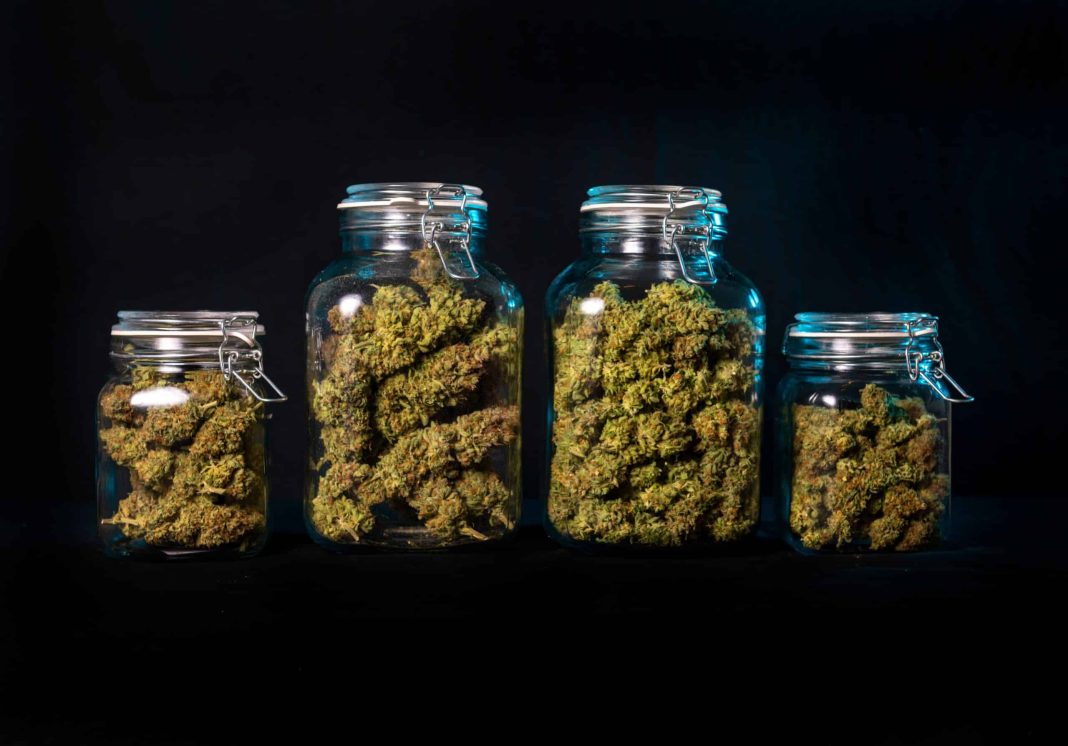Another big-name cannabis company is towing the line of financial failure, and it should come as no surprise that they’re corporate retailer from Canada. The company in question this time, is Fire & Flower, and like many others in the industry, they’re looking to restructure their business and find a way to pay back creditors before it’s too late.
About Fire & Flower
Fire & Flower is one of Canada’s largest retailers, founded in 2017 and headquartered in Edmonton, with over 100 corporate-owned stores in Canada and the United States. They also operate under three different subsidiary brand names: Friendly Stranger, Hotbox, and Happy Dayz.
In 2019, convenience store giant Alimentation Couche-Tard Inc. bought 9.9 per cent of Fire & Flower for approximately $26 million, with an option to take over majority control for $380 million. It’s unclear whether Couche-Tard ever exercised any or all of its right to buy additional shares, but they did offer the company “debtor in possession” financing of up to $9.8 million so they can continue operations while CCAA proceedings are ongoing.
But all these efforts seem almost futile as the company is simply losing popularity among consumers. “I never really liked the Fire & Flower format. … It was very much a big-box store look, and cannabis has really gone to a ‘smaller is better’ kind of format. It just doesn’t have the revenues and profits to support a big, standalone building,” said cannabis industry analyst Chris Damas.
Damas is not alone in his thinking. While I’m not too personally familiar with most of the Canadian cannabis companies, for the obvious reason that I live in the US, I do happen to have some experience with the Fire & Flower brand. A few years ago, they bought and ruined a dispensary that I used to frequent in Palm Springs. I knew the owner at the time, when it was called 420 Oasis, and it was one of the few woman-owned dispensaries in the area. It was also one of the most popular, they always had a lot of different products in stock for great prices, and they were the only dispensary that delivered to me in the high desert, since Joshua Tree was a bit far from Palm Springs.
Fire & Flower bought 420 Oasis in February 2021 for an undisclosed amount. Overall, the public reception was poor. Reasons noted include exaggerated prices, higher tax rates, less product variety, and lower quality flower. Yelp reviews include comments like “Once, when it was 420 Oasis it was amazing. Great service, great concept, awesome products, fair prices. However now that it’s Fire & Flower it is the worst dispensary in town”, and “I’m so disappointed with the changes that have come along with the name change from 420 Oasis to Fire and Flower. Having been a VERY regular customer I can no longer be a part of this dispensary.”
What’s the story?
Largescale Canadian cannabis retailer, Fire & Flower Holdings Corp., recently filed for bankruptcy protection as they’re drowning in an ocean of debt. According to court filings, the company had only $8.1 million in cash at the end of the first quarter, against a debt of $50.8 million. They are looking to sell their remaining assets in a last-ditch attempt to stay afloat.
“The applicants are unable or are expected to soon become unable to meet their obligations generally as they become due,” the company said in Ontario Superior Court filings, before being granted protection under the Companies Creditors’ Arrangement Act (CCAA). The CCAA offers legal protection to companies who owe $5 million or more, and allows them to continue operating while they restructure and try to get back in the black.
Fire & Flower plans to reduce salaries, lay off an undisclosed number of employees, and close an undermined number of stores throughout the US and Canada, including stores that operate under one of their three subsidiary brands.

“Increased competition and operating costs, margin pressure and regulatory restrictions suffered by the companies and the cannabis industry generally have collectively contributed to significantly lower revenues and higher costs than what the applicants expected their cannabis retail stores would face,” said the company in a recent statement.
Bankruptcy vs bankruptcy protection
Although they seem similar, and both are options offered to businesses that find themselves struggling financially. Bankruptcy is the end of line of a business. It means they hit a wall of debt, they can no longer cover operating costs, and they can’t pay back their investors and creditors. Once a business files for bankruptcy, the business is closed, all assets are liquidated, and the proceeds from the sold assets are paid out to creditors and investors.
Bankruptcy protection, which is also known as “insolvency protection”, is basically the step before bankruptcy. In a bankruptcy protection case, it’s still believed that the company can reach some sort of middle ground with their creditors, and they’re allowed to continue operating while they restructure and try to gain back some capital.
While sometimes these compromises end in the company getting back on its feet and eventually becoming profitable again, but that’s not always so. Either way, it usually ends up offering a better return to creditors and investors than bankruptcy.
Canada’s faltering cannabis industry
If you follow cannabis news (and if you’re here, we assume you do), then you’ve probably seen many stories about Canada’s failing market. From mass layoffs, to store closers, salary cuts, major restructuring plans, tax woes, and even companies closing down entirely – the one constant is that most companies, both large and small, are in hot water.
Canopy Growth, for example, one of the biggest pot retailers in the country, recently announced a string layoffs and store closures, and just last week, The S&P Dow Jones reported that it had updated its S&P/TSX listing, and that Canopy Growth was booted off because their total market capitalization was simply too low.

Similarly, Aurora Cannabis announced that they received a notice from Nasdaq in March, stating that their share price dropped below $1 over the one-month period from February 8th to March 8th. While they’re not out of the market just yet, they have only 180 days from the time of the notice (cutoff date of September 20th) to get their stock prices back up to the “minimum bid price requirement”.
Other well-known giants of the cannabis industry include Canopy Growth, Aurora, Tilray (which is actually a US company, but they have a huge branch in Canada and merged with Canadian company Aphria back in 2020), and Cresco Labs – all of which are struggling. Nearly every company on the companies market cap list, including these, has been on a downward trajectory for the last few years.
And to top it all off, Canada announced last month that they will begin collecting unpaid excise taxes from legal producers – a move that makes you wonder if they’re trying to collect all the money they can before further industry collapse.
Final thoughts
At this point, the world is looking at Canada as an example of what not to do when regulating an adult-use cannabis market. It’s almost as if no company from there is safe from economic troubles, whether they’re operating within Canada, in the US, or globally. Fire & Flower is just one more big name that’s not living up to anyone’s expectations, including their own.
Hello readers. We’re happy to have you with us at Cannadelics.com; a news source here to bring you the best in independent reporting for the growing cannabis and hallucinogen fields. Join us frequently to stay on top of everything, and subscribe to our Cannadelics Weekly Newsletter, for updates straight to your email. Check out some awesome promos for cannabis buds, smoking devices and equipment like vapes, edibles, cannabinoid compounds, amanita mushroom products, and a whole bunch more. Let’s all get stoned together!





